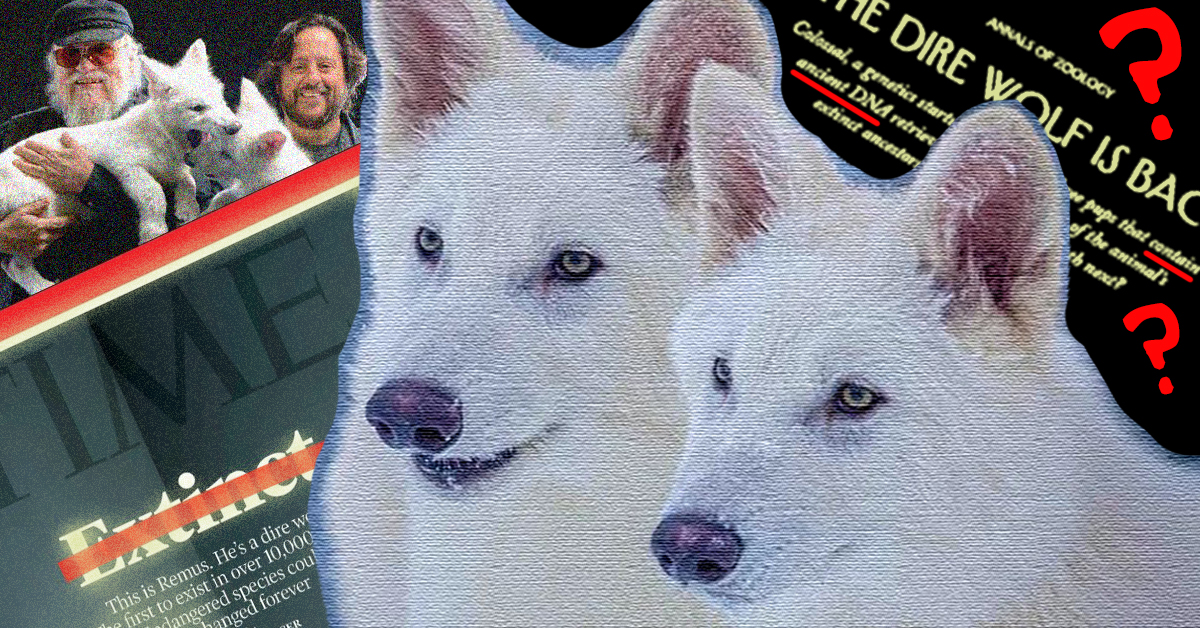As 2018 comes to a close, let’s look at some of the year’s biggest science stories, both on our planet and beyond.
A rover — and water? — on Mars
This year saw the successful launch and touchdown of the InSight lander, which was built to study Mars up close. The probe, which landed on the red planet last November 26, has since captured and sent tons of data and recordings, revolutionizing what we know about Earth’s iron oxide-covered neighbor. Prior to that, however, researchers said in August that they found evidence of standing liquid near the planet’s south pole. Spotted via satellite, this body of water is said to be buried under thick ice, suggesting the possibility of life surviving on the planet today.
700,000 years ago, prehistoric Pinoys butchered a rhino
Announced in May 2018, an unexpected fossil find changed what we know about the Philippines in prehistoric times. A rhino fossil from Cagayan over 700,000 years old bore marks and scratches that researchers believe were made by Homo erectus. This is a significant discovery, as it means that humans already began to populate the Philippines over 640,000 years earlier than we initially thought.
Larger spleen, longer swim: Why the Bajau can dive longer than everyone else
How long can you hold your breath underwater, and how far into the depths can you go? How does a 13-minute, 200-foot-deep dive sound to you? If you’re one of the Bajau, you’d probably shrug this off — and you wouldn’t even need any sophisticated gear to do it. A unique study revealed that this group of nomads found in the Philippines, Malaysia, and Indonesia developed larger spleens over time. Passed on from one generation to the next, this genetic adaptation helps the Bajau dive longer and deeper by supporting oxygenated red blood cell circulation, just like other marine mammals that spend a considerable amount of time underwater.
The clock is ticking on climate change — and worldwide catastrophe
In an alarming special report released by the United Nations Intergovernmental Panel on Climate Change, the organization warned that if current global warming and carbon emission levels do not decrease significantly by 2030, we face the prospect of worldwide extinctions, food shortages, water crises, and the destruction of natural ecosystems in just 12 years. The report was penned by 91 scientists, edited by professionals from 40 countries, and based on over 6,000 scientific journals and articles. It calls for “rapid, far-reaching and unprecedented changes in all aspects of society” to limit global warming to 1.5 degrees Celsius.
From “endangered” to “extinct”: 2018’s creature casualties
2018 also saw a number of species go extinct, due in no small part to human activity. According to scientists at BirdLife International, the insect-eating Po’ouli from Hawaii has officially been wiped out from the face of the planet. Two songbirds from Brazil, the Cryptic Treehunter and the Alagoas Foliage-gleaner, have died out as well. The iconic Spix’s macaw, the blue-feathered bird that inspired the animated film Rio, is now also officially extinct in the wild.
The death of Sudan, a captive northern white rhinoceros, also spells doom for its species. Sudan was one of the last three living members of its species, and the only known male, to boot. Suffering from “age-related complications,” the rhino was euthanized on March 19.
Our Solar System *might* have a ninth planet, after all
Just before Halloween, astronomers announced a startling discovery: The Goblin, a dwarf planet whose odd orbit suggests that a ninth planet may actually be lurking somewhere along the edges of our Solar System. To this day, the search for the mysterious “Planet X” — believed by scientists to be seven times as massive as Earth — continues.
Did this Chinese scientist really create the world’s first gene-edited babies?
Last November, a Chinese scientist named He Jiankui stunned the world with a bold announcement. He claimed that he created the world’s first gene-edited babies: twin girls implanted with an HIV-resistant gene. This stirred outrage and righteous indignation in the global scientific community, raising serious questions on ethical standards and the safety of the reportedly “premature” process of genetically editing embryos. Dr. He briefly disappeared from the public eye almost immediately after his declaration, leading some to believe that he had been arrested by the Chinese government. Reports say that he is currently living in a heavily guarded university guesthouse somewhere in southern China.
We might be able to wipe out malaria-carrying mosquitoes — but should we?
Researchers from London used gene-editing technology in controlled experiments involving the malaria-carrying mosquito, Anopheles gambiae. Their findings revealed that by targeting a specific gene, they were able to render the females incapable of biting or reproducing, making it possible to eradicate the species. However, questions have emerged regarding the potential ecological consequences of driving the species to extinction (though scientists are saying that right now, it doesn’t look like eliminating A. gambiae would have any disastrous consequences).
Cover photo: Markus Spiske/Pexels
Author: Mikael Angelo Francisco
Bitten by the science writing bug, Mikael has years of writing and editorial experience under his belt. As the editor-in-chief of FlipScience, Mikael has sworn to help make science more fun and interesting for geeky readers and casual audiences alike.







